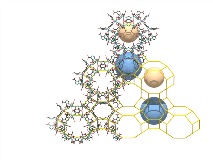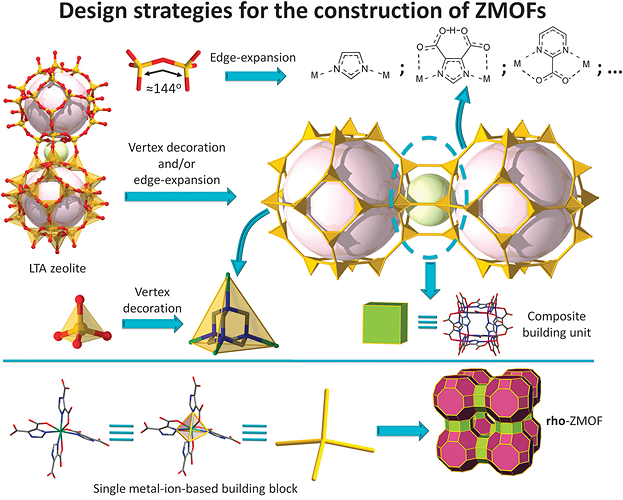



Zeolite-like frameworks, based on tetrahedral nodes, are of tremendous interest due to the myriad potential applications associated with their unique structures and intrinsic pore systems. Nevertheless, the scope of applications is restricted by the intricacy to construct zeolite-like frameworks with extra-large cavities/windows and/or periodic intra-framework organic functionality. Our group is continuously striving to develop new synthetic pathways and design strategies to assemble zeolite-like metal−organic frameworks (ZMOFs, a unique subset of MOFs topologically related to inorganic zeolites) to tackle these challenges, where the unique features of MOFs, namely facile tunability, pore size tailoring, and intra- and/or extra-framework functionalization, are combined with the distinctive confined space, ion exchange ability, and, especially, the forbidden interpenetration of zeolite structures. Our ZMOFs can be constructed utilizing several different methods. The single-metal-ion-based MBB approach permits the generation of rigid and directional tetrahedral building units (TBUs) based on heterochelation of 6-8–coordinate single-metal ions by angular ditopic organic linkers. The linkers serve to replace the O2- bridges in traditional zeolites, while maintaining the placement of tetrahedra at similar angles (average M-O-M of ~145°), decorating and expanding the native zeolite-net topology.
Related
Publications